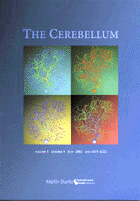 logo by Time Magazine
logo by Time MagazineThe HelixoMetry Report from Time Magizine's Summit "The Future of Life":
 logo by Time Magazine
logo by Time Magazine
TIME MAGAZINE in February 19-21, 2003, in Monterey California held a groundbreaking dialogue celebrating the 50th Anniversary of the discovery of the DNA double helix.Legendary Nobel Laureate James Watson highlighted the list of luminaries. (Interview with J. Watson here)
Participation was limited to 266 leaders including
SCIENCE including Francis Collins, Hamilton O. Smith, Nobel Laureate IBEA, Craig Venter
ACADEMIA Richard Dawkins (Oxford), Nancy Wexler (Columbia University)
BIG INFORMATION TECHNOLOGY Carol Kovac (IBM), Steve Gauge (SUN), Bill Joy (SUN), Raymond Endres (Microsoft), Kay Watanabe (Cisco Systems), Ray Kurzweil (Kurzweil Technologies)
BIG PHARMA Lucy Lu (Roche), Michael Gilman (Biogen), Nancy Hopkins (Amgen), Thomas White (Celera Diagnostics), Peter Dworkin (Applera), Harvey Glick (Monsanto)
BIOINFORMATICS András Pellionisz (HelixoMetry), George Scangos (Exelixis)
VENTURE CAPITAL Steve Jurvetson (Draper, Fisher, Jurvetson), Eric Hahn (Inventures Group), Michael Pavia, (Entrepreneur Oxford Bioscience Partners)
INVESTMENT BANKS Rodney Ferguson, (JP Morgan), Mark Tercek, Managing Director and Global Head, Maykin Ho and Gregg Lemkau, Garry Menzel (Goldman Sachs)
NATIONAL LABORATORIES Norma Dunipace (Lawrence Livermore), Muin J. Khoury, (CDC), Gary Gilliland (NIST), James S. Logan, (NASA)
INTELLECTUAL PROPERTY SPECIALISTS Kate H. Murashige (Patent Group Morrison & Foerster), M.R. Pamidi (IP Newswire), Q. Todd Dickinson, Howrey Simon Arnold & White, Jeff Jonker (Wilson Sonsini Goodrich & Rosati)
THINK-TANKS Larry Smarr (Cal-IT-IT), Juan Enriquez (Harvard University), Aremond Habily (King Feisal Foundation), Edison Liu (Director of Genome Institute of Singapore), Christopher Meyer (Cap Gemini Ernst & Young)
MAGAZINES Phil Elmer-DeWitt (Time Magazine), Ralph Brave (The Nation), Michael Specter (The New Yorker), Peter Petre (Fortune) Jonathan Leake (The Sunday Times)
LEADING JOURNALS John Markoff (New York Times), Rosie Mestel (Los Angeles Times), Lisa Krieger (San Jose Mercury News), Judy Ewens (eBioSense), David Perlman (San Francisco Chronicle), Caroline Morre-Kochlacs (Stanford Daily), Horst Rademacher (Frankfurter Allgemeine Zeitung)
SCIENCE MEDIA Jennie Duscheck (Science), Gretchen Teichgraeber (Scientific American)
BIOTECH MEDIA Kevin Kelly (Wired Magazine), Bronwyn Fryer (Harvard Business Review), Paul Sloan (Business 2.0), Diane Lieberman (Bio-IT World), Justin Hibbard (Red Herring), James Newcomb (BIO-ERA), Katharine Mieszkowski (Salon.com)
NEWSMEDIA Paul Elias (Associated Press), Peter Jon Shuler (KQED) , Debbie Strickland, (Bio News), Andy Goldberg (DPA/German Press Agency), Marni Kottle (Bloomberg News Wire), Robert Krulwich (ABC News)

Jim Watson (Cold Spring Harbor), András Pellionisz (HelixoMetry) (Eileen Naughton, President of Time Magazine, Philip Elmer-DeWitt, Assistant Managing Editor, Andras Pellionisz and Nancy Wexler in the picture linked)
FractoGene Patent Pending presentation
by Founder, CEO of HelixoMetry, Dr. Andras J. Pellionisz
Read the FractoGene breakthrough here - the hitherto untold major scientific story to interpret 98.7% of the "junk DNA" of human genome
Halftime is over (1953-2003)
The DNA structure was discovered 50 years ago.
The DNA (full genome) of the human and some other species have been revealed.
The DNA code has not been cracked yet.
Second 50 years: Cracking the code (2003-2053)
With the mouse gene pool 99% homologous to that of the human - and 98.7% of human DNA being "non-coding sequences" - a paradigm shift is essential. Attention must be shifted to non-coding DNA sequences. They hold secrets to the "code" and to evolution, and intron-runs cause deadly hereditary diseases (see Friedreich Spinocerebellar Ataxia). The extra 800 Mb from mouse (2.4 Gig) to human (3.2 Gig) is practically all non-coding DNA. Introns play a central role in evolution, help make us human. Paradigm shift of "Big Pharma" is also evident: the "1 gene - 1 disease -$1billion pill" business model is untenable - shift towards molecular diagnosis and prevention, instead of super-expensive pills bankrupting health care system avoiding disease and making health care more affordable. For Information Technology, the challenge is not "gene discovery" by genome browsing utilities but to (mathematically) mine & (medically) interpret the code. Finally, for nanotechnology, the already built proteins relate to the DNA through the introns, thus, again, a software-driven industrialized, yet protein-based nanotechnology requires breakthroughs in our understanding of non-coding DNA sequences.
 Our Method to analyze non-coding DNA: FractoGene (Patent Pending): http://fractogene.com
Our Method to analyze non-coding DNA: FractoGene (Patent Pending): http://fractogene.com
 Our Horizontal Program: CerebelloGenesis (http://fractogene.com/cerebellum/) "The Cerebellum" e-journal Special Issue. The goal is in addition to sequencing "full genome of a single animals" - Launch "Horizontal Genome Programs" to reveal Physiological and Pathological Genesis of a major (CNS) organs (cerebellum, across species, including a leading "agglomeating protein disease", same group as Alzheimer's, Parkinson's, Huntington's, but Friedreich's Spinocerebellar Ataxia is proven to be caused by well known "run" of non-coding DNA, intron).
Our Horizontal Program: CerebelloGenesis (http://fractogene.com/cerebellum/) "The Cerebellum" e-journal Special Issue. The goal is in addition to sequencing "full genome of a single animals" - Launch "Horizontal Genome Programs" to reveal Physiological and Pathological Genesis of a major (CNS) organs (cerebellum, across species, including a leading "agglomeating protein disease", same group as Alzheimer's, Parkinson's, Huntington's, but Friedreich's Spinocerebellar Ataxia is proven to be caused by well known "run" of non-coding DNA, intron).
 The Company: HelixoMetry (Silicon Valley): http://helixometry.com
The Company: HelixoMetry (Silicon Valley): http://helixometry.com
For information, contact:
Dr. András J. Pellionisz
http://usa-siliconvalley.com/inst/pellionisz
Founder, CEO of HelixoMetry, Inc.
Inventor of FractoGene (Patent Pending)
408.891.7187
cob@helixometry.com